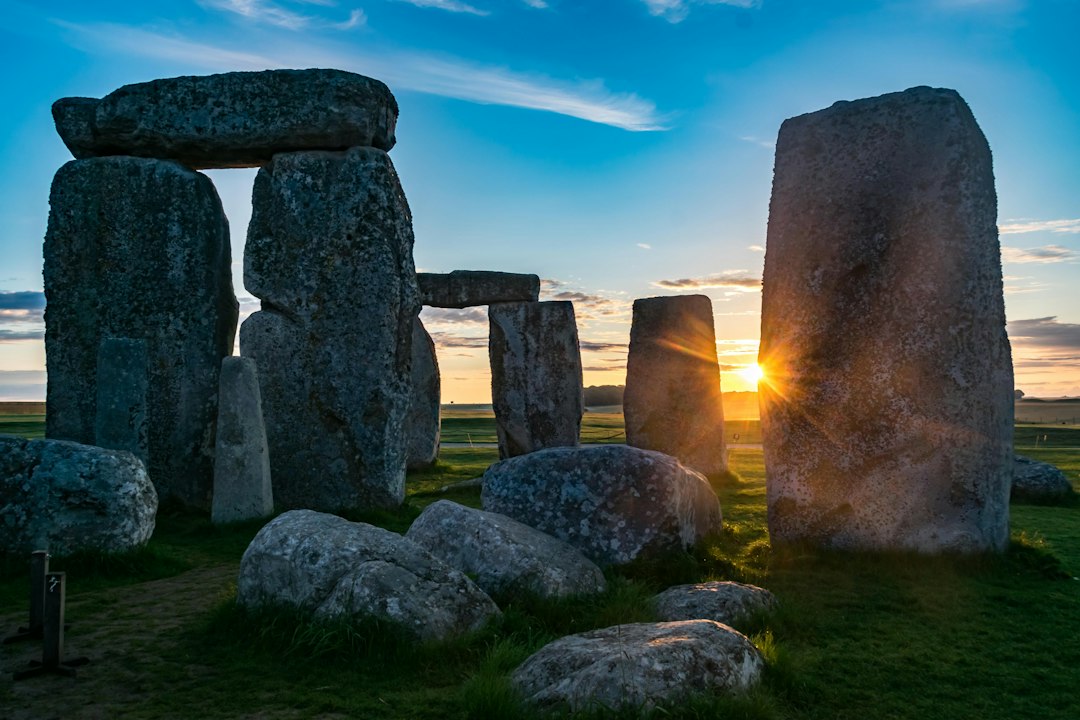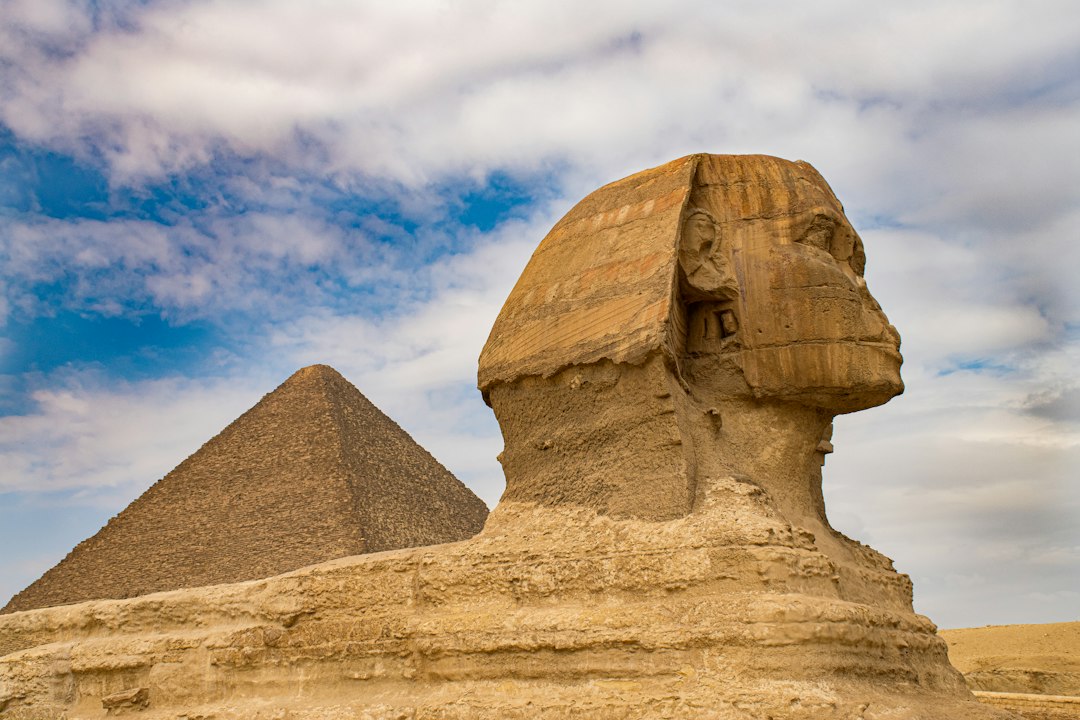Stonehenge is one of the most iconic and mysterious ancient sites in the world. Located in Wiltshire, England, this prehistoric monument has fascinated archaeologists, historians, and tourists alike for centuries. Its massive stone circles and intricate construction have sparked countless theories about its purpose and significance. In this blog post, we will delve into the origins, construction, purpose, and rituals of Stonehenge, as well as its cultural significance and modern interpretations.
The purpose of this blog post is to provide a comprehensive overview of Stonehenge, exploring its history, construction techniques, alignment with celestial bodies, rituals and ceremonies, changes over time, decline, rediscovery, and cultural legacy. By examining these aspects of Stonehenge, we hope to shed light on the mysteries surrounding this ancient site and deepen our understanding of the people who built it.
Key Takeaways
- Stonehenge is believed to have been built in several stages, with the earliest structures dating back to around 3000 BCE.
- The construction of Stonehenge remains a mystery, with theories ranging from the use of ropes and ramps to the involvement of extraterrestrial beings.
- The purpose of Stonehenge is still debated, with theories including astronomical observation, healing rituals, and burial ceremonies.
- The people who built and used Stonehenge were likely part of a complex society with a hierarchical structure and a belief in the supernatural.
- Stonehenge’s alignment with the solstices and other celestial events suggests a connection to astronomy and astrology, possibly for religious or agricultural purposes.
The Origins of Stonehenge: A Look into the Past
The history of Stonehenge dates back over 5,000 years. The first structures at the site were built around 3100 BC during the late Neolithic period. These early structures consisted of a circular ditch and bank enclosure known as a henge monument. Over time, additional features were added to the site, including the famous stone circles.
The landscape surrounding Stonehenge is also significant. The site is located on Salisbury Plain, a vast expanse of grassland that was once covered in dense forest. The clearing of this forest would have required significant effort and resources, suggesting that the people who built Stonehenge had a strong connection to the land and a deep understanding of their environment.
The Construction of Stonehenge: The Mystery of the Stones
One of the most intriguing aspects of Stonehenge is its construction. The monument consists of two main types of stones: sarsen stones and bluestones. The sarsen stones are massive sandstone blocks that were sourced from the Marlborough Downs, about 20 miles away from the site. The bluestones, on the other hand, are smaller and were transported from the Preseli Hills in Wales, over 150 miles away.
The transportation of these stones is a mystery that has puzzled researchers for centuries. It is believed that the sarsen stones were transported using a combination of sledges and rollers, while the bluestones may have been transported by water. The construction techniques used to erect the stones are also a subject of debate, with theories ranging from simple ramps and levers to more complex systems involving ropes and pulleys.
The Purpose of Stonehenge: Theories and Speculations
| Theories and Speculations | Description |
|---|---|
| Astronomical Observatory | Stonehenge was used to observe the movements of the sun, moon, and stars. |
| Religious Site | Stonehenge was a place of worship and pilgrimage for ancient peoples. |
| Healing Center | Stonehenge was used for healing rituals and ceremonies. |
| Burial Ground | Stonehenge was a burial site for important individuals. |
| Social Gathering Place | Stonehenge was a place for festivals, feasts, and other social events. |
The purpose of Stonehenge has been the subject of much speculation and debate. There are numerous theories about its function, ranging from religious and ceremonial purposes to astronomical and astrological alignments. Some believe that Stonehenge was a place of worship or a burial site, while others argue that it was an astronomical observatory or a calendar.
There is evidence to support each of these theories. For example, the alignment of Stonehenge with the summer solstice sunrise suggests a connection to astronomical events. Additionally, human remains found at the site indicate that it may have been used for burial rituals. However, the most widely accepted theory is that Stonehenge served multiple purposes, including religious ceremonies, astronomical observations, and social gatherings.
The People of Stonehenge: Uncovering the Ancient Society
To understand the purpose of Stonehenge, it is important to examine the culture and society of the people who built it. The builders of Stonehenge were part of a complex society that relied on agriculture for their survival. They lived in small communities and had a deep connection to the land.
Archaeological evidence provides insights into their daily lives. Excavations at nearby sites have uncovered tools, pottery, and animal bones, suggesting that the people of Stonehenge were skilled craftsmen and farmers. They likely had a hierarchical social structure, with religious leaders and skilled artisans playing important roles in their society.
Stonehenge would have held great significance in their culture. It may have been a gathering place for religious ceremonies, where the community came together to worship their gods and honor their ancestors. The alignment of the stones with celestial bodies would have been seen as a connection between the earthly and divine realms.
The Alignment of Stonehenge: Astronomy and Astrology

One of the most fascinating aspects of Stonehenge is its alignment with celestial bodies. The monument is carefully positioned to align with the summer solstice sunrise and the winter solstice sunset. This suggests that Stonehenge was used as an astronomical observatory, allowing the ancient people to track the movements of the sun and stars.
The alignment of Stonehenge with celestial bodies has led to speculation about its astrological significance. Some believe that it was used as a calendar or a tool for predicting celestial events. Others argue that it was a sacred site where rituals and ceremonies were performed based on astrological alignments.
While the exact purpose of the alignment remains a mystery, it is clear that the ancient people who built Stonehenge had a deep understanding of astronomy and its connection to their spiritual beliefs.
The Rituals of Stonehenge: Celebrations and Sacrifices
There is evidence to suggest that Stonehenge was used for rituals and ceremonies. Excavations at the site have uncovered human remains, including cremated bones and burial pits. This indicates that Stonehenge may have been a place of burial or a site where rituals involving human sacrifice took place.
The purpose of these rituals is still debated among researchers. Some believe that they were religious ceremonies meant to honor ancestors or appease gods. Others argue that they were fertility rituals or initiation ceremonies for young men. The significance of the sacrifices made at Stonehenge is also a subject of speculation, with some suggesting that they were offerings to the gods or acts of devotion.
The Evolution of Stonehenge: Changes and Additions over Time
Stonehenge underwent several changes and additions over time. The earliest structures at the site were simple earthworks, consisting of a circular ditch and bank enclosure. These were later replaced by the iconic stone circles, which were erected in several stages.
The bluestones, which were originally brought from Wales, were rearranged multiple times. Some stones were removed and replaced, while others were repositioned within the monument. This suggests that Stonehenge was not a static structure but evolved over time, reflecting changes in the beliefs and practices of the people who used it.
The significance of these changes is still not fully understood. It is possible that they were made to accommodate new rituals or to reflect shifts in religious beliefs. They may also have been a way for the community to assert their control over the landscape and mark their territory.
The Decline of Stonehenge: The Abandonment and Neglect of the Site
At some point in its history, Stonehenge was abandoned and fell into disrepair. The reasons for this decline are not entirely clear, but it is believed that changes in religious beliefs and social structures played a role. As the ancient society that built Stonehenge changed and evolved, the site may have lost its significance and been abandoned.
Over time, Stonehenge was neglected and forgotten. It was no longer seen as a sacred site or a place of worship. Instead, it became a curiosity for travelers and a subject of speculation for scholars. The neglect of Stonehenge had a significant impact on the site, as it led to erosion, vandalism, and damage from weathering.
The Rediscovery of Stonehenge: The Restoration and Preservation Efforts
Stonehenge was rediscovered in the 17th century by antiquarians and scholars. Since then, there have been numerous restoration and preservation efforts to protect the site and ensure its survival for future generations.
In the 20th century, Stonehenge underwent a major restoration project led by archaeologist William Hawley. This involved repositioning fallen stones, stabilizing the monument, and removing modern additions that had been made to the site. Today, Stonehenge is managed by English Heritage and is a UNESCO World Heritage Site.
The restoration and preservation efforts have had a significant impact on Stonehenge. They have helped to protect the site from further damage and ensure its survival for future generations. They have also allowed researchers to study the monument in greater detail, deepening our understanding of its construction techniques, purpose, and cultural significance.
The Legacy of Stonehenge: Cultural Significance and Modern Interpretations
Stonehenge has a rich cultural significance and has inspired countless interpretations and adaptations in modern culture. It has been depicted in art, literature, and film, and has become a symbol of ancient mystery and spirituality.
Stonehenge has also influenced modern interpretations of ancient history and archaeology. It has sparked debates about the purpose of ancient monuments and the beliefs and practices of prehistoric societies. It continues to be a subject of research and study, with new discoveries shedding light on its mysteries.
The impact of Stonehenge on modern culture cannot be overstated. It has become a popular tourist attraction, drawing visitors from around the world. It has also become a site for celebrations and gatherings, including the annual summer solstice festival.
Stonehenge is an ancient monument that continues to captivate our imagination. Its origins, construction techniques, purpose, rituals, changes over time, decline, rediscovery, and cultural legacy all contribute to its significance. By exploring these aspects of Stonehenge, we gain a deeper understanding of the people who built it and the beliefs and practices that shaped their society. Stonehenge is not just a collection of stones; it is a window into our ancient past and a testament to the ingenuity and creativity of our ancestors.
FAQs
What is Stonehenge?
Stonehenge is a prehistoric monument located in Wiltshire, England. It consists of a ring of standing stones, each around 13 feet high, seven feet wide, and weighing around 25 tons.
When was Stonehenge built?
Stonehenge was built in several stages, with the earliest construction dating back to around 3000 BCE. The final stage of construction is believed to have been completed around 1600 BCE.
Who built Stonehenge?
The builders of Stonehenge are unknown, but it is believed to have been constructed by the prehistoric people of Britain, possibly the Druids.
What was the purpose of Stonehenge?
The purpose of Stonehenge is not entirely clear, but it is believed to have been used for religious or ceremonial purposes. It may have also been used as an astronomical observatory.
How was Stonehenge constructed?
The stones used to construct Stonehenge were transported from quarries located up to 150 miles away. It is believed that the stones were transported using a combination of sledges, rollers, and boats.
Is Stonehenge open to the public?
Yes, Stonehenge is open to the public. Visitors can view the monument from a designated path, and there is also a visitor center with exhibits and a museum. However, access to the stones themselves is restricted.







